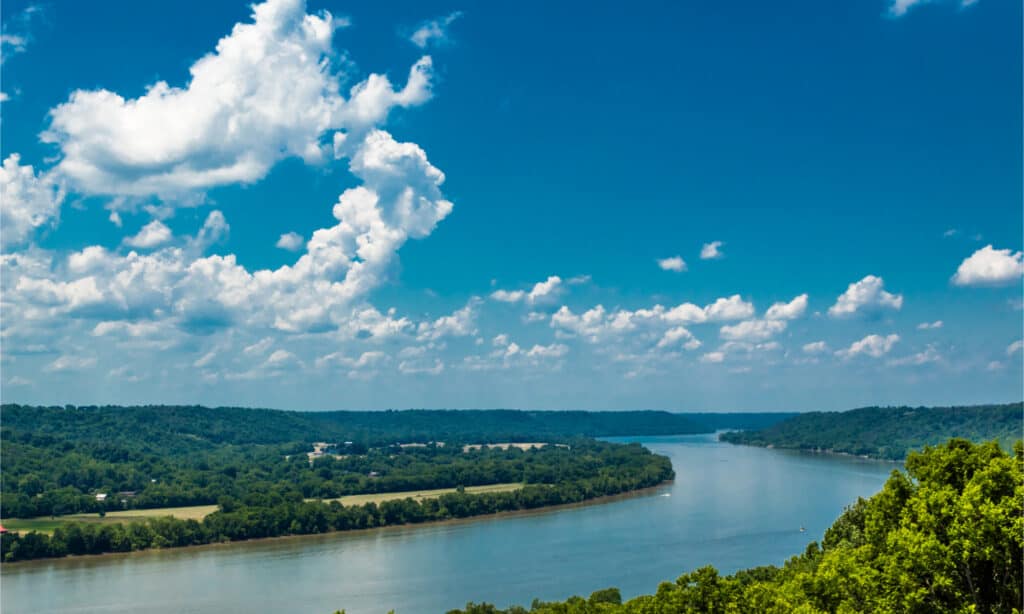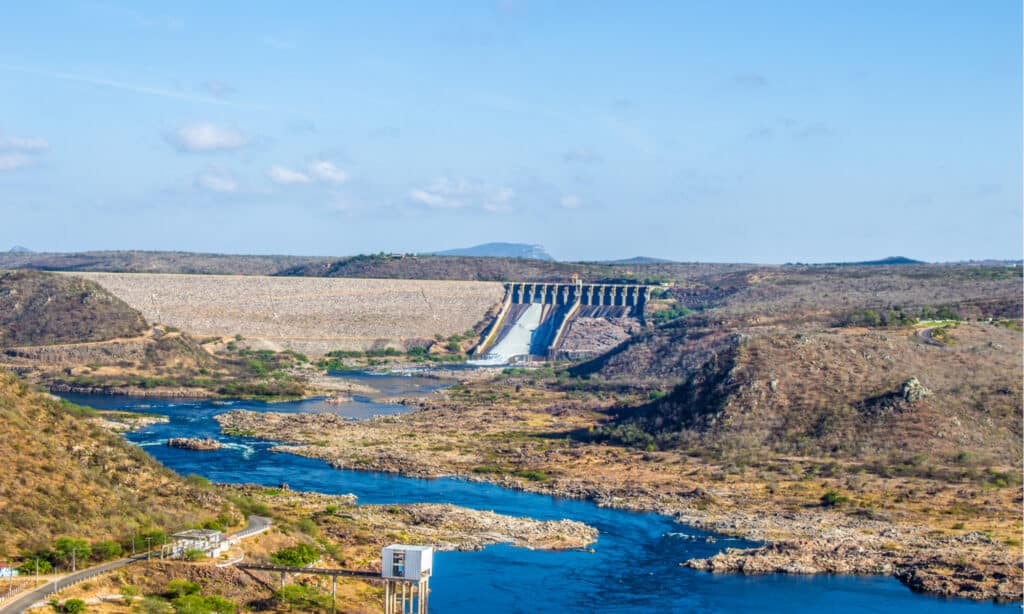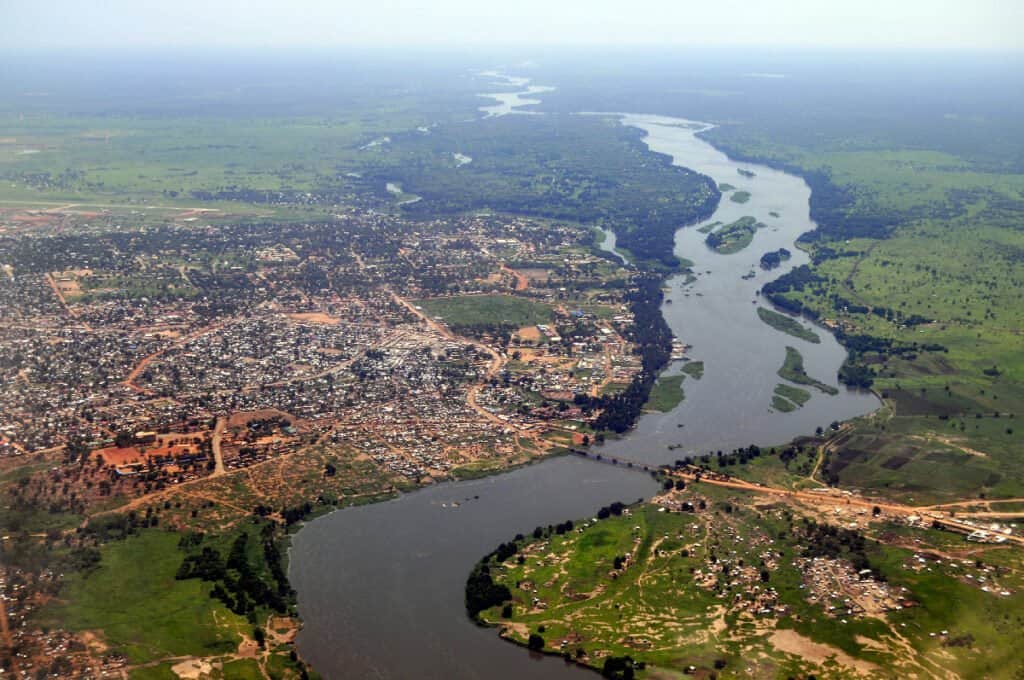Both creeks and rivers may seem like interchangeable terms, but there is a slight variation in the nomenclature. Although the United States Geological Survey doesn’t differentiate between the two, a needed explanation to the question remains. What’s the difference between a river vs a creek?
Over 70% of the earth’s surface is covered in water, yet only a tiny fraction of that is freshwater. This freshwater moves from higher elevations to lower elevations in channels like creeks, rivers, and streams. What differentiates these terms from each other is generally the size of the channel created by water.
How do we explain what the difference is between a river vs a creek? We’ll define and analyze some channel types and continue our discussion with some interesting facts about different rivers and creeks.
River vs Creek
| River | Creek | |
|---|---|---|
| Can Be Made of Several Branches | Yes | No |
| Source of Hydroelectric Power | Yes | No |
| Used for Transportation | Yes | No |
| Moves Water From High to Low | Yes | Yes |
| Both Have Currents (Flows) | Yes | Yes |
| Act As Tributaries | Yes | Yes |
These are the similarities and differences between a river and a creek:
- Rivers sometimes have several branches, but creeks do not.
- Hydroelectric power is produced by rivers but not by creeks.
- Creeks are not big enough for boats and goods, whereas rivers are sufficiently big.
- Both creeks and rivers refer to water that flows over the surface of the earth.
- Creeks and rivers both flow down elevations.
- Both creeks and rivers act as tributaries to larger creeks and rivers.
River vs Creek Explained

Both rivers and creeks are freshwater channels with defined banks.
©Corey B Stevens/Shutterstock.com
Rivers are freshwater channels that are larger than creeks. Both exist as channels for freshwater.
River channels sometimes split into separate channels, as seen in braided rivers. Creeks, on the other hand, are not large enough to split into separate channels. They both have channels with defined bottoms, banks, and flowing water, which is what makes them freshwater watercourses instead of relatively still bodies of water like a lake.
Rivers are sometimes strong enough for humans to harvest their power and use it as electricity. This is called hydropower. Creeks are not large enough to produce the kind of power needed for electricity production.
Rivers are often much wider and much deeper than creeks. This allows rivers to be used as transportation corridors for both goods and people. Creeks cannot be used for the transportation of goods because they’re too narrow and too shallow.
Both rivers and creeks supply water for agricultural purposes. Both are also vital to the movement of water from locations that have an abundance of it to arid places. Without creeks and rivers, life on land wouldn’t look the same as it does today.
What is a River?

Rivers are harnessed for their hydroelectric power.
©Paulo Arsand/Shutterstock.com
Rivers are large freshwater channels that move water from higher elevations to lower elevations.
Rivers are mostly formed by precipitation like snow or rain, but sometimes their sources are underground springs or glaciers. The water released at high elevations takes the path of least resistance down to lower elevations. Rivers form to facilitate this natural movement of water.
Most cities around the world are near rivers. Rivers provide great soil for agriculture as well as means for the transportation of people and goods. They’re also harnessed for hydroelectric power, and they continue to provide a major source of food as they have since human existence began.
What is a Creek?

Creeks usually form before rivers and at higher elevations in response to water runoff.
©iStock.com/Valery Bocman
Creeks are small channels that move freshwater from higher elevations to lower elevations. They serve the same purpose as rivers but on a drastically smaller scale both concerning their natural formation and human enterprise.
Creeks usually form before rivers and at higher elevations in response to water runoff. These creeks flow into rivers and feed the river.
Creeks are often tributaries to rivers, which means they end at the river and release their water into it. Creeks are sometimes tapped for agricultural purposes, though the amount of land they can support is significantly smaller than a river.
What is the Longest Creek in the World?
The longest creek in the world is the Billabong Creek, located in New South Wales, Australia. It’s somewhere between 200 miles and 370 miles long, depending on who you ask. It has 16 small tributaries before it meets up with the Edward River.
There is a sanctuary along the Billabong Creek that has a lake in the middle for native animals to come to visit as well as a variety of other captive animals. The native animals use the lake as a nursery, while the sanctuary itself houses some famous Australian favorites like kangaroos, cassowaries, crocodiles, wombats, and koalas.
What is the Biggest River in the World?

The biggest river in the world is the Nile River.
©iStock.com/Phototreat
The biggest river in the world is the Nile River. There are debates about how to define the biggest river in the world, as others are wider and deeper, but the Nile River is the longest. It’s over 4,000 miles long.
This river ends at the Mediterranean Sea and weaves through 11 countries in Africa, and it holds about 20% of all of the freshwater on earth. Even though it meanders through the Sahara desert, it’s fed by regions that experience substantial rainfall every year.
What channels are part of the Nile system and where the Nile officially starts are all up for debate, as it has been since antiquity. The river vs channel debate becomes especially important in these discussions, as channels are identified as creeks, streams, or rivers.
What is a Tidal Creek?
Estuaries or inlets that are very narrow and are subject to the movement of the tides are called tidal creeks or tidal channels. Tidal creeks are generally slow-moving, so sediment builds up in wetland environments. Some creeks are dry at low tide while quite deep at high tide.
These creeks create unique ecosystems while also providing a valuable highway for saltwater organisms to come inland. It also allows for a swap of nutrients between the sea and inland freshwater sources. In Florida, alligators are sometimes found in tidal creeks, albeit rarely since they can’t survive long in salt water.
The photo featured at the top of this post is © iStock.com/Valery Bocman
Thank you for reading! Have some feedback for us? Contact the AZ Animals editorial team.






